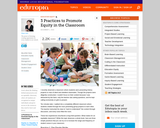
Learn about the thinking behind three equitable practices in classroom where all students are recognized as unique individuals, have equity in voice, and given access to the resources they need to learn.

Learn about the thinking behind three equitable practices in classroom where all students are recognized as unique individuals, have equity in voice, and given access to the resources they need to learn.

In a multi-grade class of fourth, fifth, and sixth graders, students learn to work and communicate in teams. Through projects and a class structure that supports differentiation, Ms. Ehrke is able to keep students challenged and engaged. Her strategies for differentiation and communication can be used in any classroom.
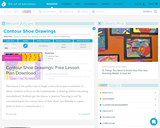
This website has National Standard aligned lesson plans, courses art teachers (and others) can take for credit or professional development, and online magazine, videos, and art conferences.
They cover art: advocacy, assessment, classroom management, creativity, technology, curriculum, differentiation, Instructional strategies, media, techniques, methods, approaches, organization, philosophies, and professional development.

In this teaching instruction video Ms. Yim explains the benefits of a rule where students ask 3 before her.
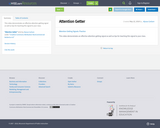
This video demonstrates an effective attention getting signal as well as tips for teaching this signal to your class.
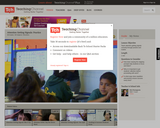
This video demonstrates an effective attention getting signal as well as tips for teaching this signal to your class.

This video demonstrates how to help students learn to expect direction from one spot in the classroom. Teachers will consider why it is effective to have students' full attention before teaching or giving directions; how teacher consistency improves student response; and what additional cues or signals may be used to capture students' attention?
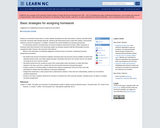
Suggestions for establishing homework assignments and policies.
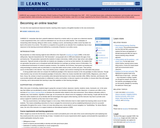
For even the most experienced classroom teacher, teaching online requires a thoughtful transition to the new environment.
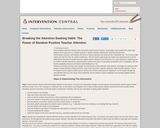
Some students misbehave because they are trying to attract teacher attention. Surprisingly, many students who value adult attention don't really care if it is positive (praise) or negative attention (reprimands)--they just want attention!
Unfortunately, instructors with students who thrive on teacher attention can easily fall into a 'reprimand trap.' The scenario might unfold much like this: First, the student misbehaves. Then the teacher approaches the student and reprimands him or her for misbehaving. Because the student finds the negative teacher attention to be reinforcing, he or she continues to misbehave-and the teacher naturally responds by reprimanding the student more often! An escalating, predictable cycle is established, with the student repeatedly acting-out and teacher reprimanding him or her.
Teachers can break out of this cycle, though, by using 'random positive attention' with students. Essentially, the instructor starts to ignore student attention-seeking behaviors, while at the same time 'randomly' giving the student positive attention. That is, the student receives regular positive teacher attention but at times unconnected to misbehavior. So the student still gets the adult attention that he or she craves. More importantly, the link between student misbehavior and resulting negative teacher attention is broken.
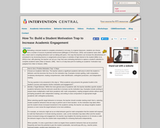
Motivating a reluctant student to complete schoolwork is not easy. In a typical classroom, students can choose from a number of sources of potential reinforcement (Billington & DiTommaso, 2003)--and academic tasks often take a back seat to competing behaviors such as talking with peers. One way that teachers can increase the attractiveness of schoolwork is by structuring lessons or assignments around topics or activities of high interest to the student (Miller et al., 2003).In fact, with planning, the teacher can set up a 'trap' that uses motivating elements to capture a student's attention to complete academic tasks (Alber & Heward, 1996). Here is a 6-step blue-print for building an academic 'motivation trap' (adapted from Alber & Heward, 1996).
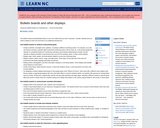
Using your bulletin boards as a teaching tool -- not just as decoration.
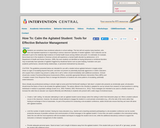
Students can sometimes have emotional outbursts in school settings. This fact will not surprise many teachers, who have had repeated experience in responding to serious classroom episodes of student agitation. Such outbursts can be attributed in part to the relatively high incidence of mental health issues among children and youth. It is estimated, for example, that at least one in five students in American schools will experience a mental health disorder by adolescence (U.S. Department of Health and Human Services, 1999). But even students not identified as having behavioral or emotional disorders may occasionally have episodes of agitation triggered by situational factors such as peer bullying, frustration over poor academic performance, stressful family relationships, or perceived mistreatment by educators.

7th Grade Math Teacher Chris McCloud from the School of the Future in New York gives us a 1-minute show and tell of how he interacts with students to ensure class participation during group work and how he Ňbrings it back to the frontÓ to debrief the group activity.McCloud shows and explains simple verbal cues and pointing to the class ŇRespectÓ sign as strategies any teacher of any grade and subject can implement in their classroom.

Your classroom is "home away from home" for you and your students. Make it attractive, comfortable, and functional.
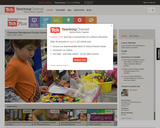
Ryan Berger is in the middle of his first year as a new Kindergarten teacher. He asks Jim Knight to observe a lesson and share strategies to help him specifically with transitioning students between centers. Mr. Knight looks for classroom management strategies he can recommend to help Mr. Berger improve class structure.Mr. Berger shares that transitioning from working with 5th graders to kindergarteners has been stressful and some of the strategies he previously used do not work as well with kindergarteners.Time used during transitions is a major focus of the discussion. They discuss ways to address content during transitions in order to make effective use of time. Finally, they discuss the importance for taking a step back to observe what students are doing well and what needs to be clarified.
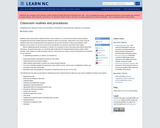
Establishing clear classroom routines and procedures is necessary for ensuring that your classroom runs smoothly.

One of the benefits of being in a physical classroom is being able to create a sense of community among your students. They can see your face; they can have impromptu conversations with their peers. They know one another and can respond to each other in ways that cannot be done over a computer or phone. How can you and your students form this group identity even in a remote environment?
Discover what Wisconsin Educators, Iris Patterson and Jessica Fleischmann have to share about this topic in a short video and companion essay in the post on the aka Teacher blog.
Hosted by PBS Wisconsin Education, and created with and for Wisconsin educators, the aka Teacher blog offers a space for exploring the many hats educators today wear, and the topics that aren't covered in teacher preparation programs. Blog posts include videos featuring educators around the state, and resources you can share with learners and use to continue your own learning.
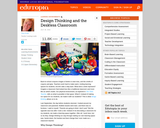
This article explains how having the students and teachers co-design the physical environment can foster student agency and provide students an introduction to design thinking. “Rethinking a learning space is about remaking not only the space, but also the learning that happens there.“
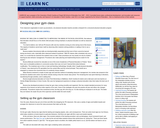
From classroom organization to warm-up procedures, one physical education teacher provides a blueprint for a structured physical education program.